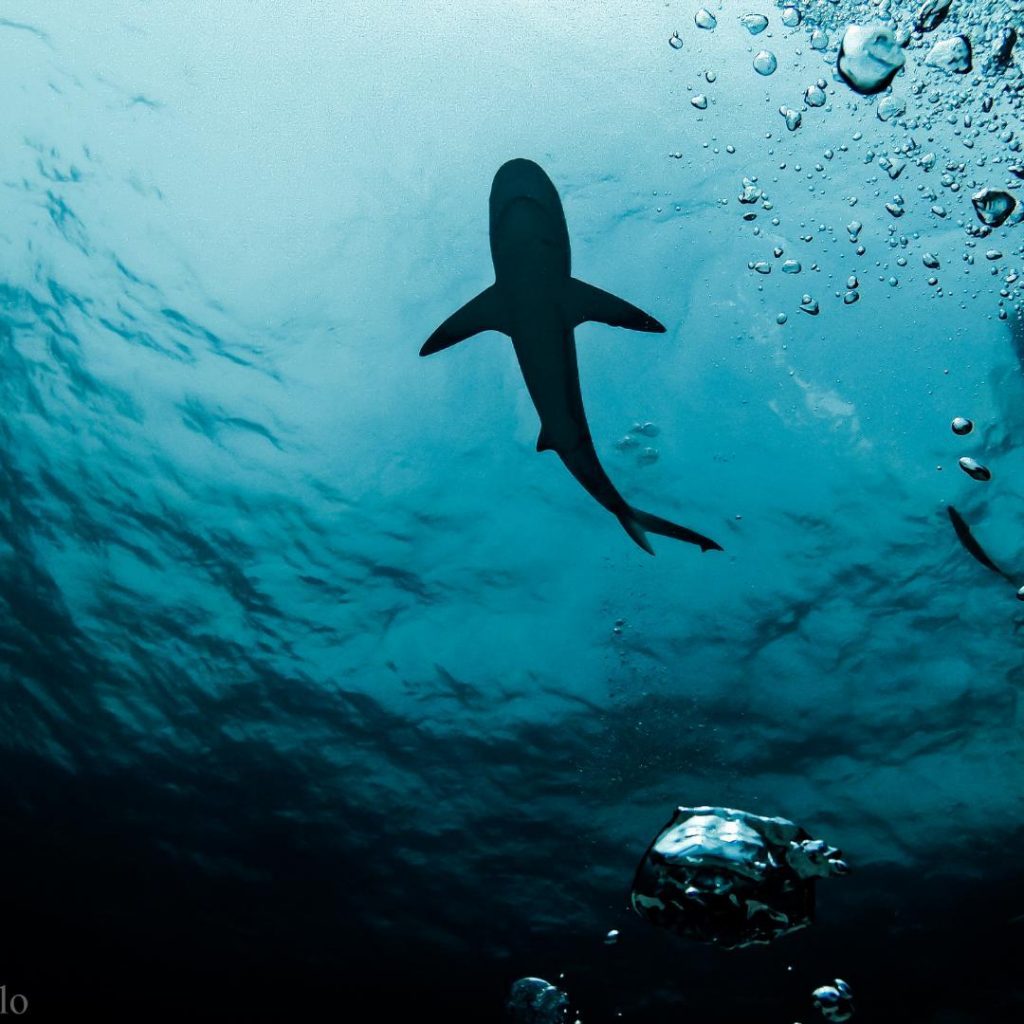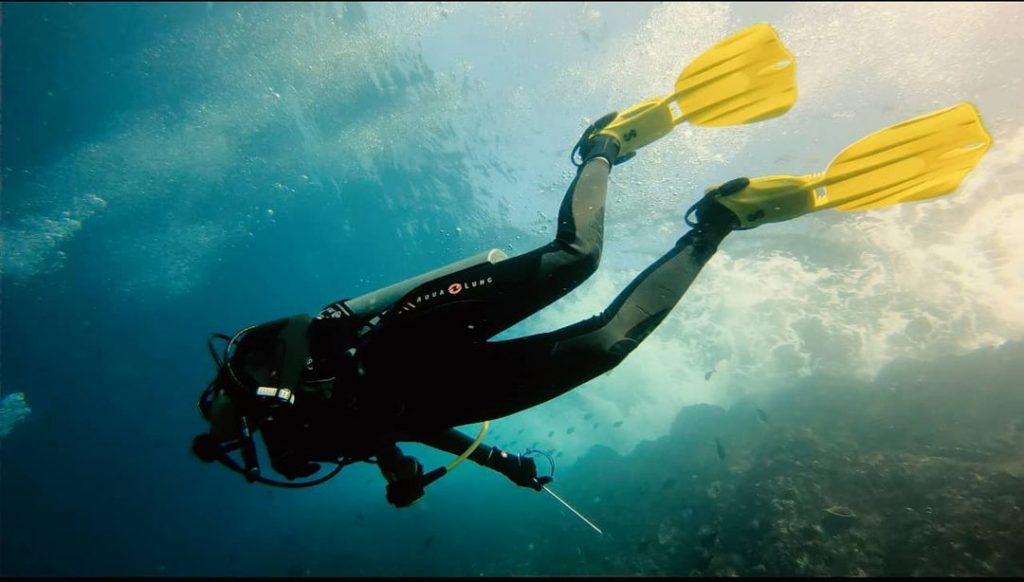
Scuba diving in Bali offers countless amazing underwater adventures, and shark encounters is just one of the favourites. In Bali, you may see three types of reef sharks: blacktip, whitetip, and grey reef sharks. Each species of reef shark has its own distinct personality and behavior, and we will provide a quick advice on what to do and what not to do while encountering them. The remote Gili Biaha is renown for sharks diving. We have two excellent dive sites to select from when diving on Gili Biaha. Shark Cave and Biaha Slope are the names of two outstanding diving locations. Normally, these two dive sites are merged into a single dive, but only if the currents let it. Going down, the shark cave is around 12 meters deep. It’s a very exciting dives for the advanced, but there are certain rules you need to adhere during scuba diving adventure with sharks in Bali.
More Diving and Travelling Stories:
Before You Go Diving in Manta Point Bali: the Guide
What You Should Do during Scuba Diving Shark Adventure in Bali
Expect Nothing during Scuba Diving Adventure with Shark in Bali
It’s critical to realize that every shark encounter is unique. The fact that numerous individuals have calmly watched a procession of sharks swim past at a certain spot does not guarantee that you will have the same experience.

Dress Like the Enemy of Sharks
Different people have different ideas about which colors are most likely to catch a shark’s interest. Every possible color combination has been explored at some point in an attempt to discourage shark attacks. Even broad black and white stripes have been attempted in an attempt to mimic the appearance of a banded sea serpent, which is shunned by the majority of shark species.
Wear Dark Gloves with No Stripes
There is nothing more enticing to a shark than two tiny lily white “fish” fluttering around in front of them. If you don’t have gloves, keep your arms crossed over your chest. Swimming with your hands is a recipe for disaster.
Dive in Groups
When you plan for scuba diving adventure with sharks in Bali, always plan to dive in a group. Sharks will generally attack a lone diver, like how they attack their prey. When you dive in pack, sharks will less likely to see you as potential prey.
Swim Close to the Reef
Never swim so far away from the reef that you can’t immediately return to it – don’t let yourself go too far away from the reef and into open water. If you are washed off a reef into deep water, you may need to be rescued fast, therefore always carry a bright orang safety flag or tube with you when you are in the sea.
Don’ts of Scuba Diving Shark Adventure in Bali
Dress Like Prey Fish
Tropical sharks are primarily fish eaters and, as such, are drawn to bright and flashy items. As a result, it would seem reasonable that a bright yellow wetsuit would attract the attention of hungry sharks. In shark diving circles, bright yellow is known as “yum yum yellow.” Other bright colors may have the same effect. So if you’re going to be in the vicinity of tropical fish devouring sharks on a daily basis, it would be a good idea to go with a more subdued hue or black.
Wear Bright Fins

Fins are another popular prey. Dive manufacturers have recently pushed for brighter and more complex fins. Some businesses even offer fins with fish-tail forms on the ends. While this could help you swim more effectively, it also appears as delicious snack for the sharks. Simple fins will enough, and avoid purchasing white ones unless you want to show off your teeth marks to your buddies after the dive. The lesson of the tale is to attempt to tone it down if it twitches, wiggles, or rattles.
Touching the Shark
Grabbing a shark by the tail or any other part of its anatomy is the greatest method to get bitten. You might not believe it, but a startling number of shark bites are the direct result of divers attempting to manhandle apparently placid sharks.
More Diving and Travelling Stories:
Papua Liveaboard Diving, Exploring Remarkable 5 Dive Sites Raja Ampat
Fast Movements
It is well known that sharks have electrical sense. A row of microscopic hairs in an elevated canal running laterally over their flanks is one of the subtle ways they perceive their surroundings. The shark’s delicate hairs detect minute motions in its surroundings. The more sudden the movement, the more probable it is that they will explore. Use calm, rhythmic fin strokes unless you want to be scrutinized. It’s also vital to have good buoyancy. Crashing into the reef or trying to remain down may provoke aggressiveness, or it may have the opposite effect and scare away a shark that you were hoping would hang around.